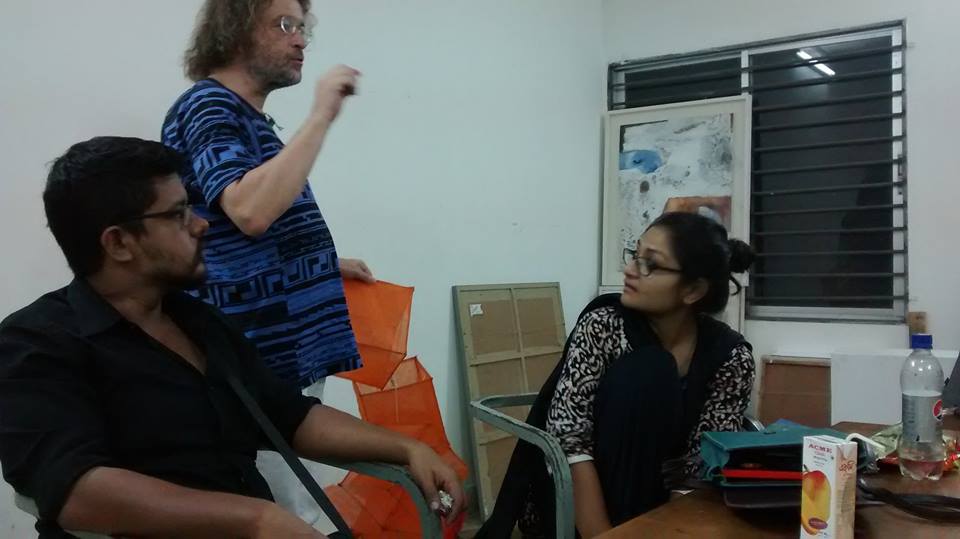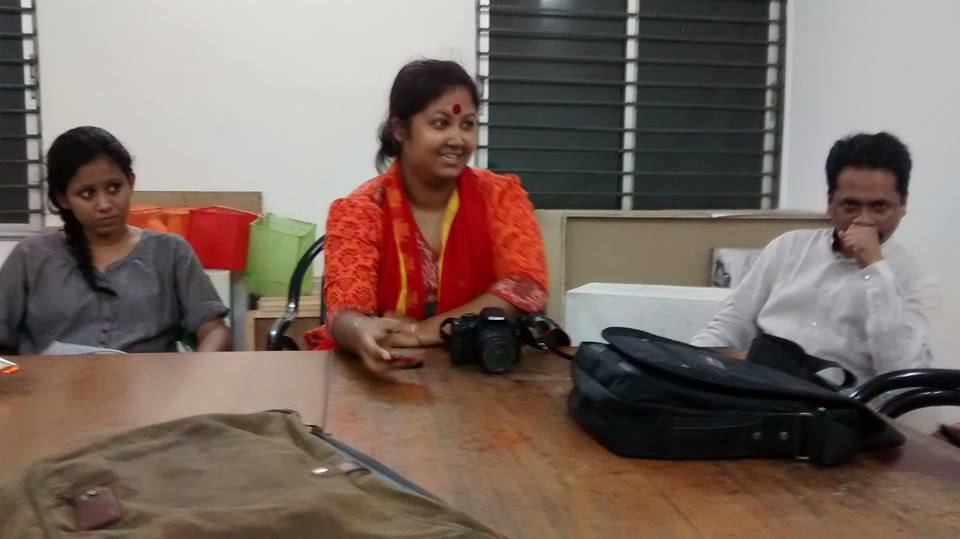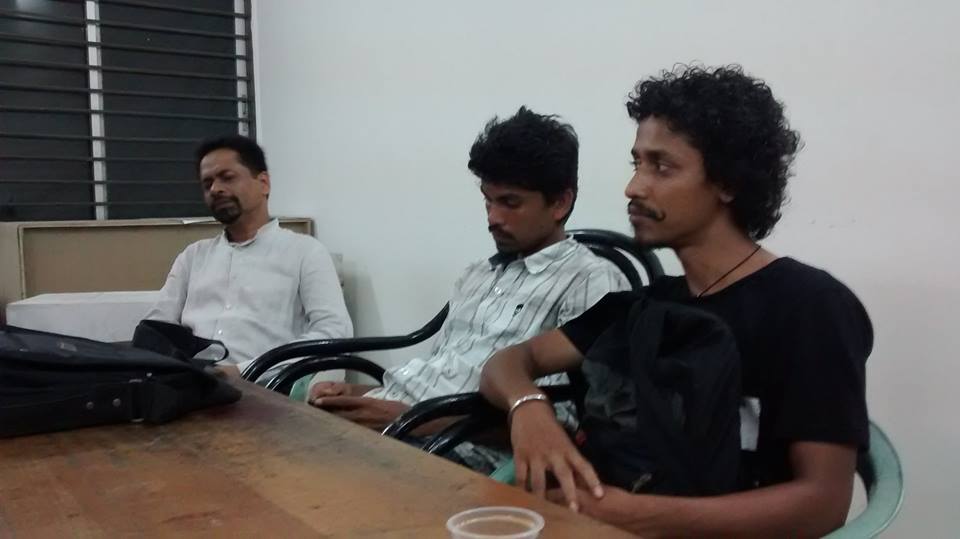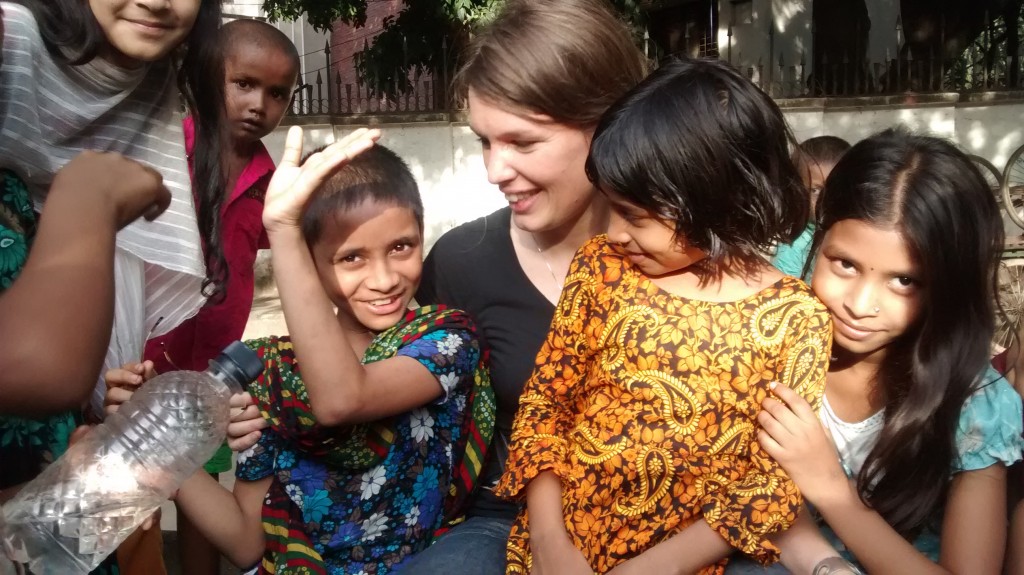There: Sumon, Trina, Shourov, Emran, Alia, Samsul, Moon, Syed
Missing: Ali, Apurbo, Jhumu, Kallol, Aroni, Sabia
Where shall we show our work? What shall we show and how shall we show it?
Trina: I want to show it to everybody. Martijn says “That’s too broad, what is your message? Let’s talk about that more.“
Martijn says he would like to put all the portraits he made, and the drawings and paintings of everyone printed and laminated, and put it from the wall to the floor, so people will look at it, and are walking over all the faces. We can talk to the owner of Bashundhara shopping mall.
Dhaka Art centre: We will use the space of Dhaka art centre to put work from everybody, everyone brings 4/5 pieces of their work and projects. We can use the place not in a standard way. We can use two/three rooms, and put the art everywhere: on the floors, and ceiling, like the city is: organized like a rhizome.
We can make it like a bucket of fluid: we start in the Dhaka art centre and let it flow from there to its surroundings. It can have a festival like character; we invite musicians, theatre makers, all kinds of people to perform.
Shourov: Who is your audience: I thought that when I want to have an impact. So I want to target teenagers, college setting, or university setting, because those people are not generally exposed to these images.
Emran: My audience are the people that use rickshaws. And the rickshaw is available to use anywhere, we can put in the Dhaka art centre, and also make a route to places around the Dhaka art centre. Emran wants to work with the Dhaka city map.
Sumon: Wants to make a gift item from his work, reproductions of Martijns photography. He wants to give it back to the people he worked with. The painting they made with his work. Also he wants to make a big banner that can be moved during the festival, with the drawings.
During the festival he wants to collect experiences by writing or drawing or video during the festival.
Martijn: Making a big print with all the photographs, and all the paintings / drawing people made of it, and
Shourov has an idea when we do an exhibition in the shopping mall, to replace mannequins or billboards by pictures and portraits of streetchildren and homeless people.
Alia is doing 4 portraits of her father in different phases of his life. She does not know how to exhibit, as long as both her mother and father cannot see it. We are talking about a big NO ENTRANCE sign for her father and mother at the exhibition. She is recording what she fees, what her memories are during the process of painting. Martijn shows a serie he made, working on his relationship with his father. It reaches a depth where there are no words, only feelings.
Martijn is telling about Jhumu’s grandmother, who we portrayed. We asked what was really important to her, and she told us about when she was 11 months old, that her mother died, and her father remarried. She was send away to her grandmother. So you see a grandmother from the outside, you expect to think of daily things. And then you see what is inside of her. Like the rickshaw drivers who are busy with many things in their lives, other then driving a rickshaw.
So this is the question for this group, and everyone as an artist: make a heart connection with the people you are working with, and create your art from there.
So back to the question where were we can show our work, who is our audience?
1. Who is your audience?
Sumon has a special connection with rickshaw driver and the people who use them.
Alia: rich people, who hide their problems.
Trina & Moon: The Banglesellers themselves, and our fellow students.
Samsul: I like to work with these people, who live in the slum, and show them outside of a gallery. I have to think about this.
Emran: My audience are the rickshaw drivers and the people that drive with them.
2. Where shall we show it?
Sumon: In places where they can see it, outside on banners and in print.
Alia: “The Bashundhara shopping mall would be good for rich people. And I like to hang it in a tree. That could be in front of the Dhaka art Centre. I like it to be really high”
Samsul: I like to work with these people, who live in the slum, and show them outside of a gallery. I have to think about this.
Emran: “I want to use a rickshaw to ”
3. What is your message?
Sumon: “You have humanity, you can talk for yourself.”
Alia: “Rich people hide their problems. This is a person, we don’t have to judge. This person is misunderstood. I am trying to understand him.” Still working on it.
Trina & Moon: To our fellow art students “Please see them, pay them attention, make a relation.”
Samsul: I still have to do the project, so my message is not clear yet. Of my last project, the message was “Are you trapped?”
Emran: “The life of a Rickshawdrivers is much more colourful than you think.”
Syed is thinking of a project with the issue: everybody is spending money to buy more stuff, working to get that money and buying more. He has the image that everyone is living only to buy their own coffin. Martijn asks if he can talk about himself, because that’s what we work here on: it will make you a better artist if you can show yourself. Syed agrees and makes his question personal: Am I working towards my coffin?
Martijn suggests that we can put all our messages in a question: think about that.
Festival exhibition: Gespuis in Dhaka
– For the festival, we choose the Dhaka art centre as a point and work from there. There is the possibility of a shopping mall, and also other places. As long as everyone also has some work in the Dhaka art centre.
– Festival opening with a procession: all crazy objects and clothing, moving objects and Rickshaw. It is very nice to invite people to make music and theatre.
Everyone invites other performers for procession and during the festival, we will make a program. Also everyone can do something during the festival. Martijn will make a photobooth, Sumon is interviewing people, Emran is Rickshaw driving, etc
– Martijn will put a video of an artists procession on Facebook
So next week we will meet again!
15-08: Opening Athena Gallery, part of this process: show: yourself 6 PM work of Martijn Crowe, Ronald Merkesteijn and Rezaun Nabi.
16-08: 4 PM Dhaka art project group meeting to finalize the messages, locations and program festival (exact hour will be confirmed this week)
Festival:
20-08: Bring your work to Dhaka art centre and together we create exposition
21-08: Bring your work to Dhaka art centre and together we create exposition
22-08: Opening procession: 4 PM
23-08: Festival exhibition (set time, make program)
7 PM Lecture / talk with Martijn in Dhaka art Centre
24-08: Festival exhibition (set time, make program)



